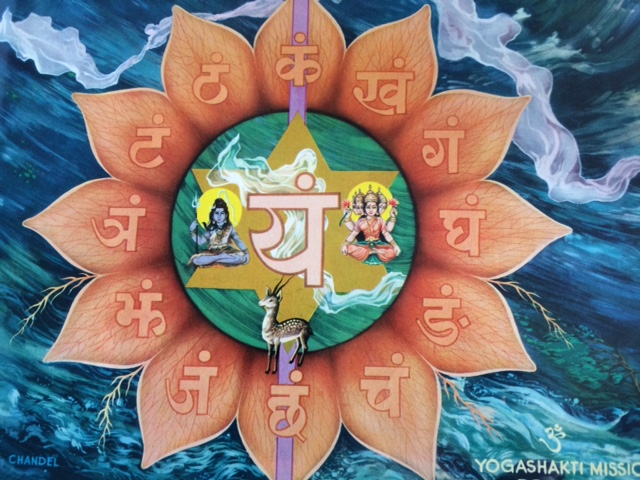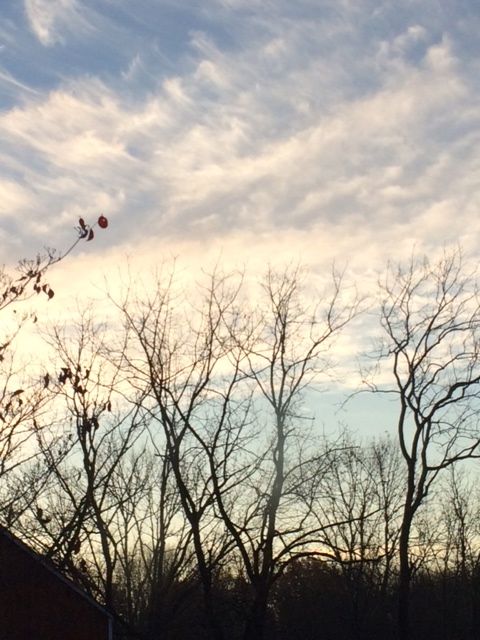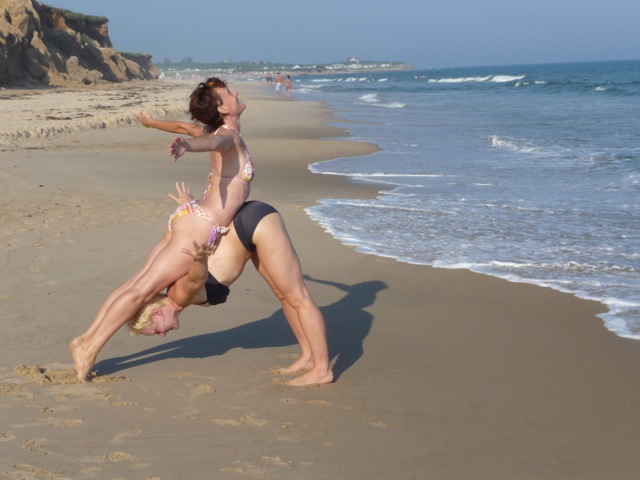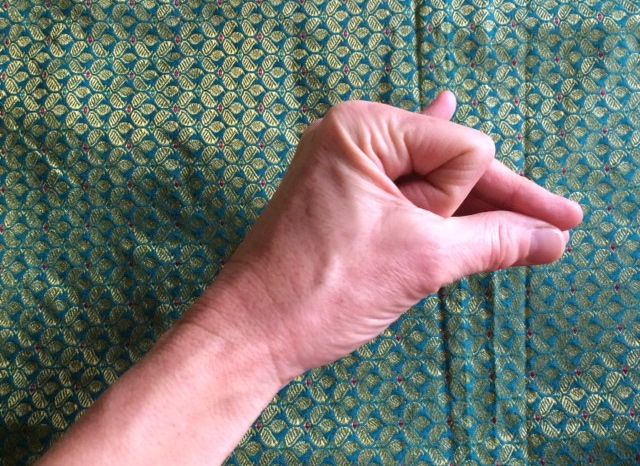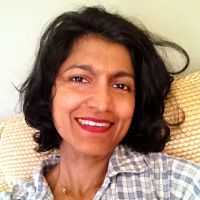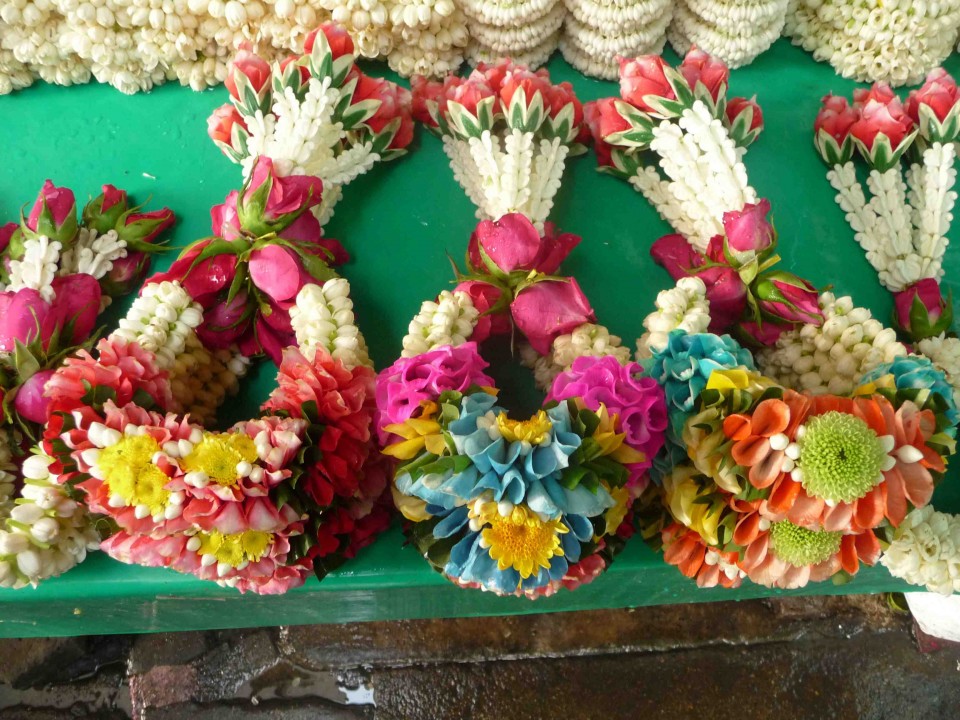SEASONAL SELF-CARE BLOG
Fourth chakra – Anahata
Posted on November 17th, 2015
Our fourth chakra, Anahata chakra, means the “unstruck” sound. This chakra is the seat of anahata nada, the transcendent cosmic sound heard only in deep states of meditation. Perceived only through pure consciousness, the sound cannot be heard by the ears or the mind. Anahata chakra is the seat of compassion, divine love, connectedness with all beings. The heart chakra is the center of awakened unconditional love. The personal love and sexual relationship that is prevalent in the second chakra, is elevated to a devotional spiritual love of all beings. Located in the center of the chest, Anahata chakra, is the air element, governing the lungs, heart, thymus gland, circulatory system, arms, and hands.
The fourth chakra is green with 12 petals on which are inscribed the Sanskrit letters, Ka, kha, ga, gha, na, ca, cha, ja, jha, na, ta, tha. In the center of the lotus is Yam, the bija mantra or seed syllable for Anahata chakra. Chanting Yam as well as the sanskrit letters is very healing and opening for the related organs as well as emotional and mental aspects of Anahata.
The beautiful image of the Fourth Chakra is from “The Invisible Seven Psychic Lotuses” by YogaShakti Mission.
AIR ELEMENT
Air is freedom, infinite, expansive, vast, immeasurable. It is everywhere, yet unseen. We can only “see” air in the relationship to the objects it affects like the wind blowing the trees. Air, the element of our fourth chakra, is the most important element, for without it we die. Located in the center of the chest, Anahata chakra governs the lungs and the heart, joining the inner being and outer world through breath and love. In harmony, Anahata chakra is in balance between giving and receiving, what we bring in and what we release in our bodies and lives. The breath supports and directs the flow of Prana, our life force, in our body. Pranayama practices are very effective to awaken Anahata and increase our vitality.
I love this simple breathing exercise to awaken the heart. I call it….
Opening the Wings of the Heart
- Stand comfortably. Breathe into your heart center
- Raise your arms directly in front of you so that your arms are parallel to the floor
- Externally rotate your arms so that your palms face the ceiling
- Inhale, straighten your legs and open your arms out the the sides of the room
- Exhale, bend your knees and draw your arms together
- As you breathe in and out, you can say inside to yourself “I open myself to give and receive love fully”
- You can also do the exercise visualizing that you are standing in front of a vast ocean.
- As you inhale, breathe in the expansiveness of the of the ocean to awaken the infinite compassion in the heart.
- As you exhale and draw your arms towards each other, imagine someone you love standing in front of you, and offer them a beautiful bouquet of flowers.
Repeat many times
PARTNER SHALABHASANA/FLYING DOWNWARD DOG
Awaken joy and heart connection
Yoga offers many beautiful heart opening poses to awaken the heart chakra. If you feel lonely, depressed, fear of intimacy, are withdrawn or act or callously toward others, your heart chakra may be deficient. In excess, you may give too much of yourself away to others in co-dependent relationships. Imbalance in the heart chakra often manifests physically through rounded tense shoulders, sunken chest, and low immunity. If you’re experiencing any of these issues, practice more shoulder openers and backbends to help open the heart chakra and infuse your being with prana, vital life force. Partner poses are a joyous way to nourish the heart chakra and offer balance between receiving and giving, mutual support and open-hearted listening.
APAN VAYU MUDRA
nourish the heart chakra
The vulnerable, tender, and delicate nature of our heart makes it often difficult to stay open through our life journey. Our sweet loving heart often gets wounded in relationships and experiences. So we build up protective barriers and defensive postures which create a kind of numbing of the heart to dull the pain and grief of our emotional wounds. This freezing of the heart, not only keeps out the pain, but also the joy and beauty in our life. When our heart is shut down, we are de-sensitized, lack compassion for others, and have difficulty engaging in relationship. It’s a terribly lonely place. To help bring balance in our heart chakra and awaken vibrancy, love, and tenderness, work with practices to awaken self-love, acceptance, forgiveness, and compassion.
To coax the delicate heart open again, practice Apan Vayu Mudra.
• Place the index finger at the base of the thumb.
• Join the middle and ring fingers and the thumb together.
• Do for 5-15 minutes 3 times a day.
• Try it with this lovely flower visualization & affirmation from Gertrud Hirsch’s book “Mudras”.
“Imagine a red rosebud in your heart. Whenever you exhale, a petal opens, until the entire flower is completely open. The petals now form a rosette, and the rosette gets a bit larger with every breath until the flower is oversized and rests upon your chest. You can feel it’s weight. Just as your chest rhythmically rises and falls while you breathe, the flower moves as well. Perhaps you can even imagine the fragrance of the rose.
Affirmation: I have the time and leisure to see beauty and enjoy silence.”
joyous heart!
Leigh
Q & A with Annie Kunjappy
Posted on October 14th, 2015
Annie Kunjappy was born and raised in Malaysia by immigrant parents from Kerala, India. She has been in New York since 2004, spreading her knowledge and love for food and conscious eating. Annie will be leading the food portion of our Seasonal Self-Care workshops on November 1 (Winter Wellness) and April 3 (Spring Detox).
How do you know Leigh?
Leigh was my first yoga teacher! She started teaching her first yoga class at the warehouse loft space where I lived in San Francisco in 1990. I feel that her amazing teaching laid a strong foundation for my yoga practice in the years to come. We were both artists in the theater/dance/ performance world and have collaborated on several projects over the years.
Have you always been interested in food? When did you realize you would have a career as a chef?
My mother was a fabulous cook, so I had the good fortune of growing up eating very good food! I have always loved delicious, creative food, but my specific interest in food and healing came about from my own investigations into healing myself from eczema and other sensitivities that had plagued me since childhood. Western doctors at that time offered very little beyond steroids and cortisol creams as salves for the symptoms. My “return” to Eastern medicine and particularly to discovering the power of the daily practice of conscious eating was what finally healed me. This lead me to getting trained as a chef specializing in food and healing.
You studied and taught at the Natural Gourmet Institute for Health and Culinary Arts. How did you decide on that specific program? What was it like going from student to instructor?
The Natural Gourmet Institute offered a program that included the study of Ayurveda, Chinese 5-phase Theory, Macrobiotics, etc. Their approach to gourmet cooking had, at its heart, a devotion to health and healing.
Your approach to to nutrition and self-care is based on Ayurveda, Chinese Medicine and western nutritional science. Can you explain how you integrate all of these “systems” into one?
Each tradition has fine-tuned it’s approach based on the truths of their environment, culture, history and value system. They have their differences and underlying similarities. I do not integrate all these systems into one by any means. Each person, under their specific set of conditions will ideally learn to address their own physical and spiritual needs informed and aided by the richness offered by these various approaches.
What can people expect from your upcoming seasonal attunement workshops? Is it accessible to people who have not been exposed to ayurevda, chinese medicine and seasonal practices?
It is designed to be accessible to the newcomer with plenty of inspiration for further study and investigation. There will be very do-able recipes and easy to follow charts, etc. to take home and start your own practice.
New Yorkers tend to be perfectionists. Is there a way to eat “perfectly” for the seasons? How would you suggest people approach a seasonal diet?
With a keen sense of listening to your own body, curiosity, and flexibility.
When you eat in alignment with the seasons, how do you feel?
Vital, energetic, strong, healthy. Not suffering from overheating in the summer, nor freezing in the winter. There is a sense of flow and ease.
You are also a performer. Do your two passions ever intermingle?
There have been a few shows that included the eating of cupcakes, the cooking and consuming of food on stage, and recipes… And I try to bring my performance background into my workshops, with the hope of making them fun and inspiring…
What do you like to do in your free time?
Hmmm….. “free time”? Time is time for me… I write and paint and read and do fun things with my family and friends….
If you could go anyplace in the world, right now, where would it be and why?
Right now, not always, it might be Tibet, as it used to be… I am curious to experience what a country whose governmental mission was the research into spiritual life would have been like….. Also the thin air, the high plateau the vista…
Sing to your hearts content
Posted on June 16th, 2015
Open up your voice and sing from your heart to infuse your spirit with the joyful abundance of Summer.
I took this picture when I was in Thailand in 2014 studying Thai massage with master teacher, Pichest Boonthumee. My favorite thing to do when traveling in Asia is to get up early and walk through the open air markets. The streets and markets are buzzing with life and vitality. Our first day studying thai massage with Pichet, we were to arrive at 9am with offerings- flowers, incense, and fruit. So I got up early and went to the market. I was mesmorized by the intricate beautiful flower offerings that were on display. People of all walks of life were purchasing them on their way to work. The daily flower art offerings hung everywhere, on the mirror in the rickshaws, on the bow of the boats, in the restaurants, on the spirit houses and temples. Gratitude in the form of these beautiful ephemeral works of flower art were lusciously everywhere. They make me so happy.
As the Summer solstice is here, I share with you the beauty of these flower offerings. Our gardens are blooming and the bounty of the Summer is shining everywhere. According to Chinese Medicine, Summer is the time to nourish the heart and small intestine. When talking about the heart, Chinese medicine includes the physical heart as well as the mind or consciousness of our being. The heart circulates the blood through the body, houses the spirit, and is responsible for maintaining awareness. The heart-mind is said to sprout at the tongue. Speech and song emerge from the heart center as fragrant blossoms emerging from the stem and root. I am reminded of our phrase in English “Sing to your heart’s content”.
People with a balanced heart-mind shine not only through their generous, joyous, loving presence but also through their clarity of speech and thought. They are good communicators, highly articulate and aware. For most of us, unfortunately, our heart-mind’s are scattered and confused. Constant media stimulus and the fragmentation of our modern lives leaves us with frighteningly short attention spans, and a constant stream of agitated, anxious thoughts whirling in our mind. Our thoughts become diffused, disjointed, and our speech confused or rambling. These are signs that our heart-mind is out of balance.
To strengthen the heart-mind and gather your scattered thoughts, sing and explore voice centered practices this Summer. It is the perfect time to delve into the beautiful Indian devotional chanting practices of kirtan, and mantra. Chanting in the sacred language of Sanskrit helps focus your mind and invites forward your innate state of spaciousness, clarity and pure awareness. Chanting is like a vibrational form of flower offerings-strings of sacred sound garlands offered from the heart.
“The word mantra is derived from the words manama (‘thinking’) and trana ( ‘liberation’). In other words, a mantra is a potent form of thought, an instrument of conscious intention.
Georg Feuerstein, “The Yoga Tradition”
‘Because the mantra is an expression of a more evolved consciousness, it offers a unique link with that higher level. For this reason, it not only makes the path to higher consciousness clearer by replacing interfering thoughts, its gradual incorporation pulls consciousness toward that state.’”
Swami Rama, “Yoga & Psychotherapy”
Join us for joyful sonic explorations this Summer through our Art of Sound Module!
Enjoy!
Leigh
